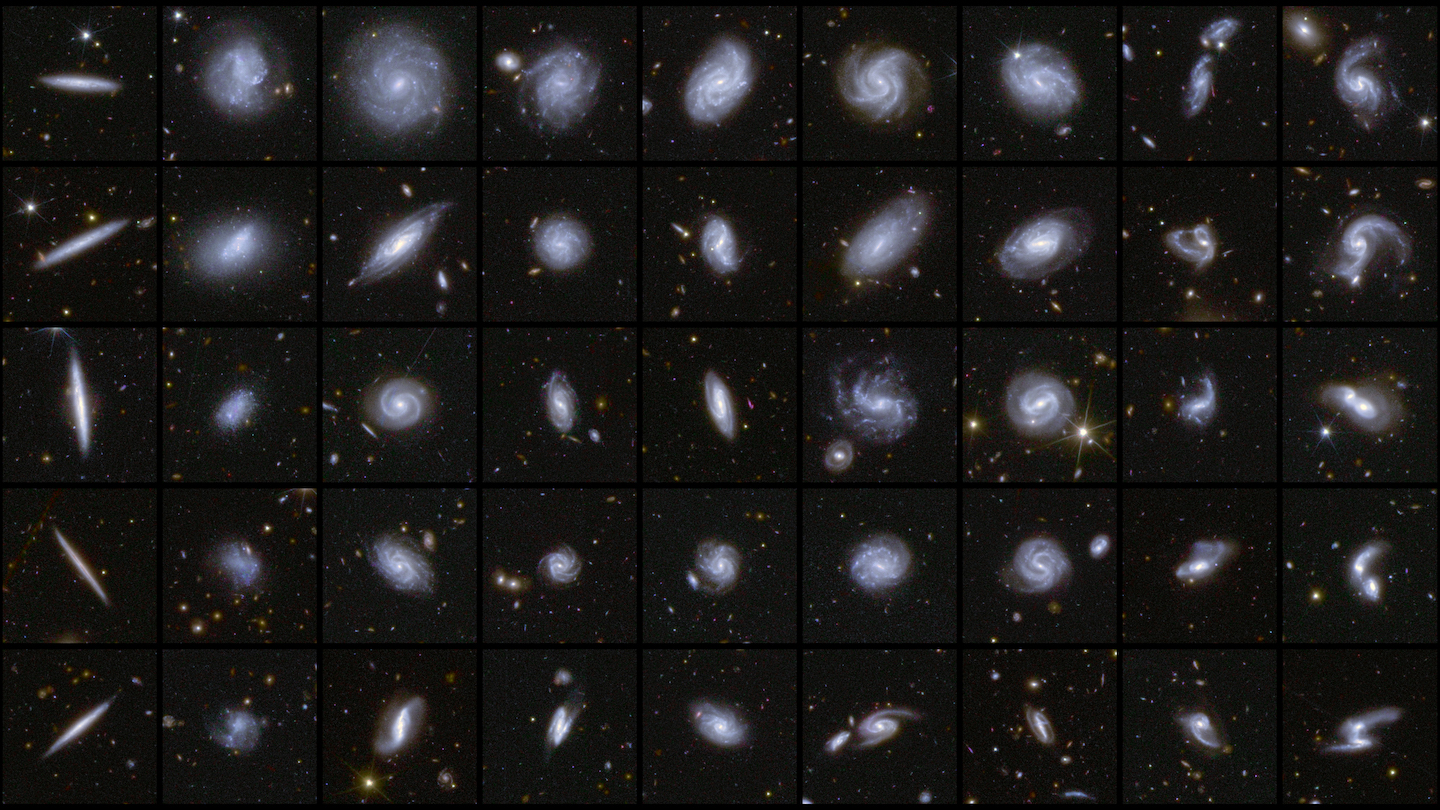Today marks 50 years since the European Space Agency (ESA) was established and began serving Europe as its space agency. Spacecraft and particle accelerators both operate in harsh radiation environments, extreme temperatures and high vacuum. Each must process large amounts of data quickly and autonomously. Ten years ago, ESA and CERN signed a bilateral cooperation agreement to share expertise and facilities. The goal was to expand the limits of human knowledge and keep Europe at the leading edge of progress, innovation and growth. In an article published earlier this year in the CERN Courier, Véronique Ferlet-Cavrois from ESA and Markus Brugger and Enrico Chesta from CERN highlight seven ways the two organisations have since been working together to further fundamental exploration and innovation in space technologies.
1. Mapping the Universe
The Euclid space telescope, which was launched in 2023 and began observations in 2024, is exploring the dark Universe by mapping the large-scale structure of billions of galaxies out to 10 billion light-years across more than a third of the sky. With many CERN cosmologists involved in testing theories of physics beyond the Standard Model, Euclid first became a CERN-recognised experiment in 2015. CERN also contributes to the development of Euclid’s “science ground segment” (SGS), which converts raw data received from the spacecraft into usable scientific products such as galaxy catalogues and dark-matter maps. CERN’s virtual-machine file system (CernVM-FS) has been integrated into the SGS to allow continuous software deployment across Euclid’s nine data centres and on developers’ laptops.
2. Planetary exploration
Though planetary exploration is conceptually far from fundamental physics, its technical demands require similar expertise. A good example is the Jupiter Icy Moons Explorer (JUICE) mission, which should reach Jupiter in July 2031 and make detailed observations of the gas giant and its three large ocean-bearing moons. Jupiter’s magnetic field is a million times greater in volume than Earth’s magnetosphere, trapping large fluxes of highly energetic electrons and protons. Before JUICE, the direct and indirect impact of high-energy electrons on modern electronic devices had never been studied before. Two test campaigns took place in the VESPER facility, which is part of the CERN Linear Electron Accelerator for Research (CLEAR) project. Components were tested with tuneable beam energies of between 60 and 200 MeV, and average fluxes of roughly 108 electrons per square centimetre per second, mirroring expected radiation levels in the Jovian system.
3. Earth observation
Earth observation from orbit has applications ranging from environmental monitoring to weather forecasting. CERN and ESA collaborate on both developing the advanced technologies required by these applications and ensuring they can operate in the harsh radiation environment of space. In 2017 and 2018, ESA teams came to CERN’s North Area with several partner companies to test the performance of radiation monitors, field-programmable gate arrays (FPGAs) and electronics chips in ultra-high-energy ion beams at the Super Proton Synchrotron.
More recently, CERN joined Edge SpAIce – an EU project to monitor ecosystems and track plastic pollution in the oceans. The project uses CERN’s high-level synthesis for machine learning (hls4ml) AI technology to run models on an FPGA chip that was launched on board the Balkan-1 satellite in January 2025.
4. Dosimetry for human spaceflight
In space, nothing is more important than astronauts’ safety and well-being. To this end, in August 2021 ESA astronaut Thomas Pesquet activated the LUMINA experiment inside the International Space Station (ISS), as part of the ALPHA mission. LUMINA uses two several-kilometre-long optical fibres as active dosimeters to measure ionising radiation aboard the ISS. Having studied optical-fibre-based technologies for many years, CERN helped optimise the architecture of the dosimeters and performed tests to calibrate the instrument, which will operate on the ISS for a period of up to five years.
5. Radiation-hardness assurance
It’s no mean feat to ensure that CERN’s accelerator infrastructure functions in increasingly challenging radiation environments. Similar challenges are found in space. So-called radiation-hardness assurance (RHA) reduces radiation-induced failures in space through environment simulations, part selection and testing, radiation-tolerant design, worst-case analysis and shielding definition. Since its creation in 2008, CERN’s Radiation to Electronics project has amplified the work of many equipment and service groups in modelling, mitigating and testing the effect of radiation on electronics. A decade later, joint test campaigns with ESA demonstrated the value of CERN’s facilities and expertise to RHA for spaceflight. This led to the signing of a joint protocol on radiation environments, technologies and facilities in 2019.
To enable testing of highly integrated electronic components, ESA supported studies to develop high-energy heavy-ion testing capabilities for micro-electronics (CHIMERA), which led to the High-Energy Accelerators for Radiation Testing and Shielding (HEARTS) programme sponsored by the European Commission. The programme’s 2024 pilot user run enabled a dozen aerospace companies to perform business-critical research on electronic components using ion beams from the Proton Synchrotron for the first time.
6. In-orbit demonstrators
Weighing 1 kg and measuring just 10 cm on each side, the CELESTA satellite was designed to study the effects of cosmic radiation on electronics. Initiated in partnership with the University of Montpellier and ESA, and launched in July 2022, CELESTA was CERN’s first in-orbit technology demonstrator. As well as providing the first opportunity for the CERN high-energy-accelerator mixed-field (CHARM) facility to test a full satellite, CELESTA made it possible to flight-qualify SpaceRadMon, a miniaturised version of the LHC’s well-proven radiation monitoring device. SpaceRadMon has since been adopted by other ESA missions such as Trisat and GENA-OT, and could be used in the future as a low-cost predictive maintenance tool to reduce space debris and improve space sustainability.
7. Stimulating the space economy
Space technology is a fast-growing industry replete with opportunities for public–private cooperation. Whether spun off from space exploration or particle physics, start-up companies and high-tech ventures receive support from ESA and CERN to bring to market technologies with positive societal and economic impacts. The use of CERN’s Timepix technology in space missions is a prime example. Private company Advacam collaborated with the Czech Technical University to provide a Timepix-based radiation-monitoring payload called SATRAM to ESA’s Proba-V mission in order to map land cover and vegetation growth across the entire planet every two days.
Another example is SigmaLabs – a Polish startup founded by CERN alumni specialising in radiation detectors and predictive-maintenance R&D for space applications. SigmaLabs was recently selected by ESA and the Polish Space Agency to provide one of the experiments expected to fly on Axiom Mission 4 – a private spaceflight to the ISS scheduled for launch in June 2025 that will include Polish astronaut and CERN engineer Sławosz Uznański. The experiment will assess the scalability and versatility of the SpaceRadMon technology.
This text is an edited extract of the CERN Courier article authored by Véronique Ferlet-Cavrois from ESA and Markus Brugger and Enrico Chesta from CERN.

